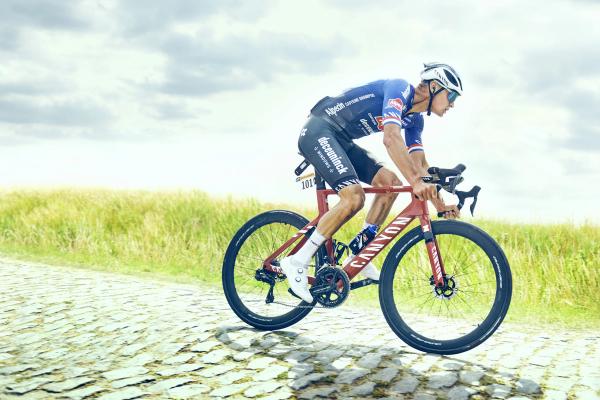GCN Tech Clinic: What spares should I carry for tubeless?
Alex and Ollie are joined by tech guru Josh Poertner for the latest GCN Tech Clinic
Tom Hallam-Gravells
Online Production Editor
It’s time for the latest GCN Tech Clinic and this week it’s a special edition as Alex and Ollie are joined by SILCA CEO and all-round tech guru Josh Poertner. The trio team up to impart all of their tech wisdom and provide the answers to your most pressing questions.
What happened to cyclo-cross bikes?
Starting today’s episode, what has happened to cyclo-cross bikes and have they become overly specialised? On paper they provide a happy medium between mountain and gravel bikes but in reality they’ve become purely race-focussed machines. Many can only accommodate relatively small tyres for off-road riding, mainly due to UCI rules, and they often don’t have mounts for mudguards or bottle cages.
They’ve become so race focussed that the only reason to buy one may be for a cyclocross race.
Is a tubeless setup suitable for heavy riders?
The tube versus tubeless debate will undoubtedly rumble on and we won’t bore you with all of the pros and cons here (we’ve got plenty of videos covering the topic), but are there specific benefits to running tubeless tyres for heavier riders?
There’s good news here as there are additional benefits with a tubeless setup allowing riders to use wider tyres. According to Josh, 32mm is the optimum width.
Is a dork disc aero?
It’s time for a niche component with the lesser-mentioned dork disc. They’re the small plastic discs located between the cassette and wheel spokes that offer protection should you drop a chain. Many (Ollie included) argue that they’re not totally necessary. While we don’t have any science to back it up, we also suspect that they hamper aerodynamics.
What spares do I need for tubeless?
Running a tubeless setup also means carrying more spares with you on a ride, particularly if you intend to plug a puncture rather than swapping in a tube. Forgetting any of these spares could leave you stranded on the side of the road. Fear not as our presenters give you the lowdown on everything you’ll need to get yourself out of any puncture-related nightmares.
Do spoke patterns really make a difference?
This one left our regular tech experts stumped but luckily Josh was on hand to fill the gap in our knowledge.
Far from being another decorative element with fancy patterns, different spoke patterns actually affect the performance and feel of a wheel. Generally, a radial arrangement will lead to a harsher ride as the forces are coming directly up through the spokes. Crossed spoke patterns lead to additional torsional stiffness plus added comfort. So crossed spoke patterns aren’t just for show, they have some serious benefits.
There’s lots more behind spoke patterning too as Josh expertly explains.
PTFE vs waxing: how do they compare?
This one sparked plenty of passion in the studio, especially from Josh who has strong feelings on the subject.
We won’t fully nerd out like Josh and Ollie here but PTFE is essentially a chemical used in certain lubes and does its job very well. However, it also happens to be very toxic so is best avoided. That’s why this one is a clear win for waxing and there are many more environmentally-friendly products out there that are better options.
Why is racing getting quicker?
It’s a topic that always sparks plenty of debate but why is racing constantly getting faster? There’s one simple answer here: aerodynamics.
And we’re not just talking about more aero bikes. Virtually every aspect of components, clothing and even rider position has undergone aero fine tuning, leading to much faster riders out on the road.
Tech makes such a big difference that Ollie almost managed to beat Eddy Merckx’s 1972 hour record of 49.431km.
Does wheel weight matter?
Yes! Having Josh on the team today paid off again with this one as he was able to provide figures to back this up.
Of course there is a balance between the importance of weight and aerodynamics. According to Josh, weight becomes the most important factor when the gradient you’re riding reaches 7.5%. That’s when riding at 250 watts, so the point when the balance tips in the favour of weight will vary.
Have a tech question you need answering? Head over to this week’s Tech Clinic video over on the GCN Tech YouTube channel and add your question to the comments along with #ASKGCNTECH.








.jpg?w=600&auto=format)



